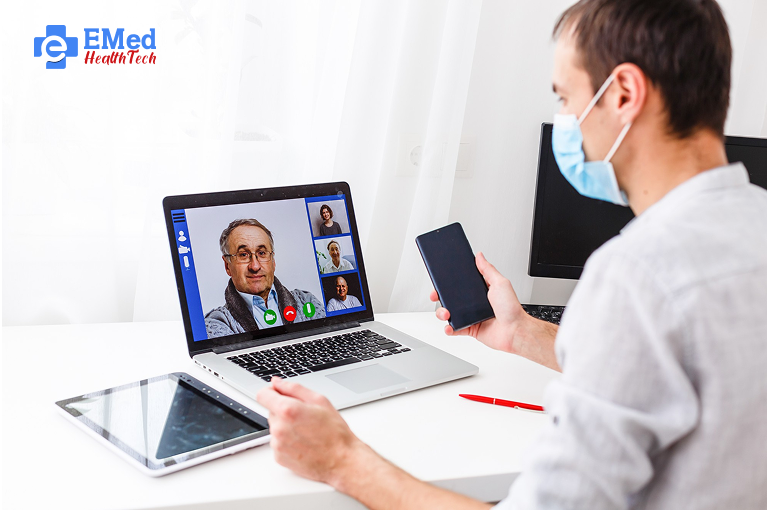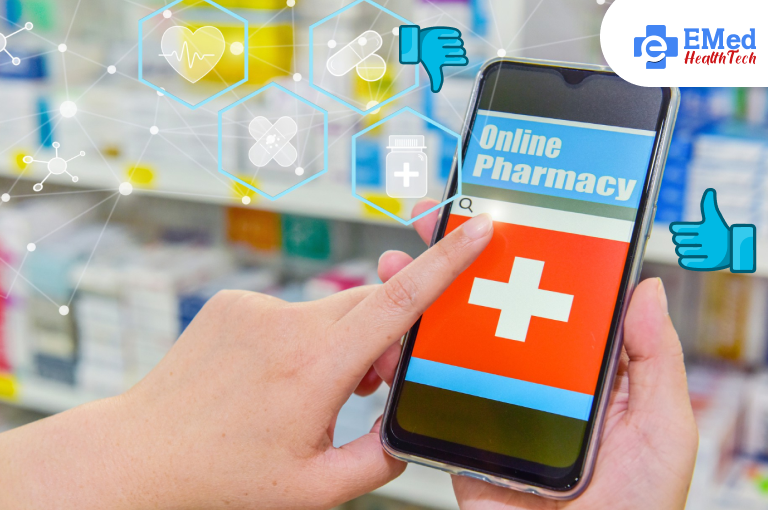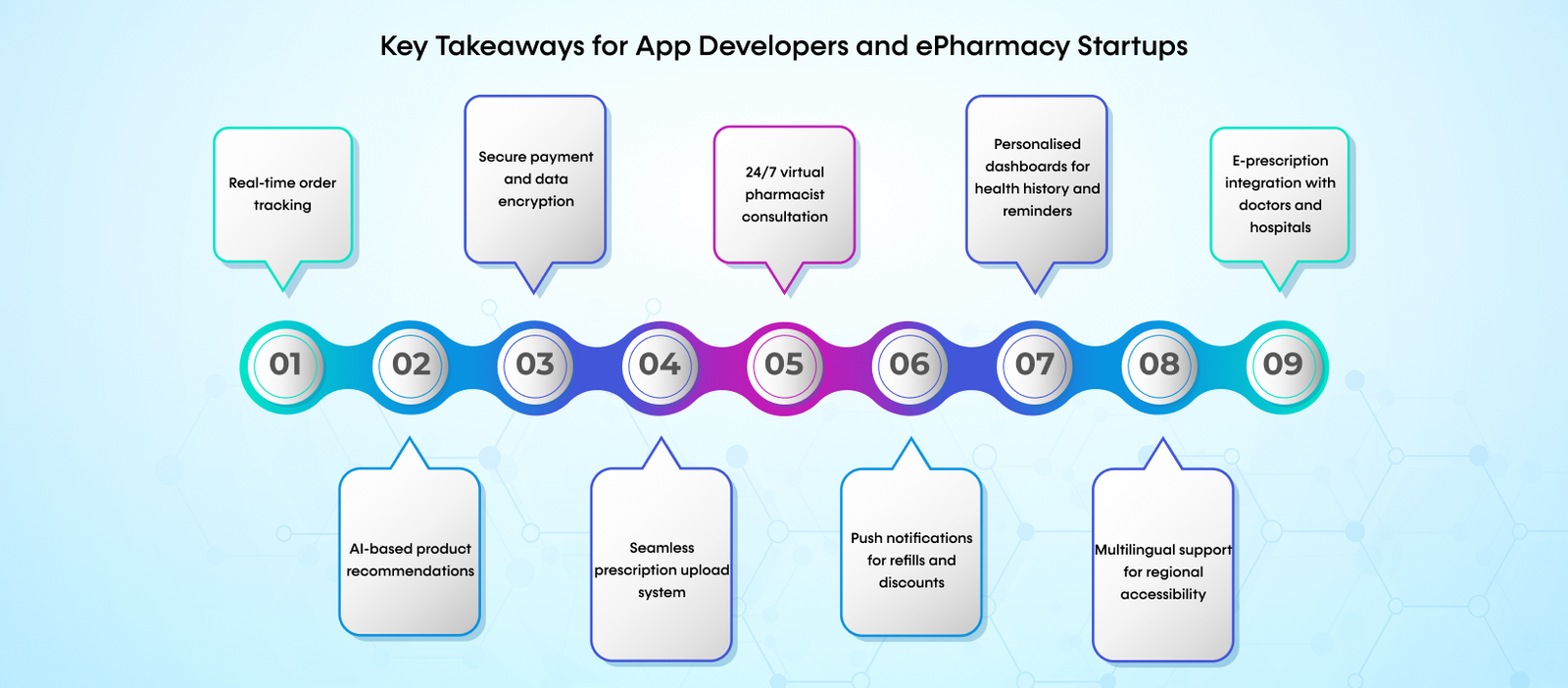The healthcare field is in major change due to strides in digital improvement. Patients anticipate to have normal access to care, fitting communication with their suppliers, and the capacity to safely oversee their wellbeing information, etc. Healthcare providers, on the other hand, are looking for smarter systems to convey quality care efficiently.
At EMed Health Tech, we believe that an improved healthcare system begins with the right innovation stack—the foundation upon which each digital health solution is built. Whether it be EMR/EHR integration and advancement, or HIPAA-compliant app development, custom healthcare software or a successful healthcare app development, all cumulatively focuses on progressive healthcare environment using our technology stack.
In this blog post, we outline our technology stack and how it aligns with providing reliable, secure, and adaptable healthcare solutions.
Why the Right Technology Stack Matters in Healthcare?
The healthcare industry has unique expectations, which include managing sensitive information, being regulated with strict compliance, categorical interoperability, and diverse clients, making the technology stack crucial to overall success.
- Scalable to handle developing patient data
- Secure to ensure patient privacy
- Interoperable with existing systems like EMRs and EHRs
- User-friendly for both medical professionals and patients
- Compliant with regulations like HIPAA, GDPR, and HL7 standards
At EMed Health Tech, we build every product with these goals in mind.
What Is Our Technology Stack?
Our technology stack is a combination of the front-end, back-end, database, cloud infrastructure, APIs, and security systems that are all tailored to the healthcare domain.
Let’s break down each component in more detail.

1. Front-End Development
What users see and interact with, whether it’s a web portal for physicians or a mobile app for patients, is what is considered front-end. Tools and technologies we utilise:
- React.js / Angular / Vue.js for web applications
- Flutter / React Native for cross-platform mobile apps
- HTML5, CSS3, JavaScript for custom interfaces
- Responsive UI Frameworks to ensure accessibility on all devices
This ensures a quick, intuitive, and responsive client experience, which is basic in healthcare settings where time is of the essence.
2. Back-End Development
The back-end is the engine that powers the application, managing logic, databases, APIs, and client authentication. Technologies in our stack:
- Node.js, Python (Django/Flask), Java (Spring Boot), .NET Core
- RESTful APIs and GraphQL for efficient communication between systems
- Microservices Architecture for modular, scalable applications
- Message Queues (RabbitMQ, Kafka) for real-time communication and alerts
Our vigorous backend ensures reliability and quick information handling, even during peak loads.
3. Database and Data Management
Handling sensitive health information requires secure and proficient data management. We choose databases based on the sort and scale of the application. Databases we utilise:
- PostgreSQL / MySQL for structured data
- MongoDB for flexible and scalable document-based storage
- Redis / Memcached for high-speed caching
- FHIR (Fast Healthcare Interoperability Resources) data standards for healthcare interoperability
By adhering to HL7 and FHIR standards, our solutions ensure smooth EMR/EHR integration.
4. Cloud Infrastructure
Cloud computing is a key element of what makes modern healthcare systems more sophisticated because of its flexibility, affordability, and remote accessibility. Cloud platforms in our stack:
- Amazon Web Services (AWS)
- Google Cloud Platform (GCP)
- Microsoft Azure
Each of these cloud platforms can be beneficial when deploying applications that are HIPAA-ready, scalable and highly available. We also utilise Docker and Kubernetes for containerization and orchestration.
5. Security and Compliance
Healthcare data is highly sensitive. Subsequently, each solution we build prioritises security and compliance from the ground up. Security components of our stack:
- HIPAA-compliant app development practices
- End-to-End Encryption (SSL/TLS)
- OAuth 2.0 / JWT for secure authentication
- Role-Based Access Control (RBAC)
- Regular Security Audits and Penetration Testing
We follow the highest standards of HIPAA-compliant app development, ensuring data protection and regulatory compliance at all levels
6. Integration & Interoperability
Interoperability is a core challenge in healthcare. Our technology stack supports consistent EMR/EHR integration and interoperability across multiple systems. Integration tools & standards:
- HL7 and FHIR APIs
- Smart on FHIR Apps
- Custom Middleware for Legacy System Integration
- Health Information Exchanges (HIEs)
Whether you’re integrating with clinic records or telehealth systems, our stack handles it easily.
How Our Technology Stack Supports Custom Healthcare Software?
Each healthcare commerce is one of a kind. At EMed Health Tech, we offer custom healthcare software development that can reinforce your particular needs. This may be your clinic, demonstrative lab, telemedicine startup, or medical pharmacy chain. Our technology stack can be customised to support your requirements, for instance:

- Patient Portals
- Doctor Dashboards
- Online Consultation Systems
- Pharmacy Management
- Diagnostic and Lab Apps
- Medical Device Integration
With our technology stack, we aim to minimise time-to-market while delivering quality and compliance.
Benefits of Choosing EMed Health Tech’s Technology Stack

- Future-proofed architecture: Using tools built on modern, scalable technologies that can grow as your business grows.
- Regulatory Compliant: Ensuring complete end-to-end compliance with healthcare regulations such as HIPAA, HL7, and GDPR.
- Improved UX: From clean UI design to fast load times, our applications offer a consistent UX for all clients.
- Cost-effective: Reusable components and secluded improvement demonstrate offer assistance in relieving costs while creating high-quality applications.
- Quickened time to market: Keep up a speedier and more secure item dispatch through an agile strategy, CI/CD pipelines, and automated testing.
Conclusion
With a digital-first culture, healthcare businesses need to adapt quickly to patient desires/needs and regulatory compliance. An effective foundation starts with the right technology stack.
EMed Health Tech has designed its technology stack to create secure, flexible, and user-centric products. It encompasses everything the healthcare provider needs, from custom healthcare software and healthcare app development to standardised EMR/EHR integration and HIPAA-compliant app development, to enable healthcare providers to build for the future today.
Ready to Transform Your Healthcare Business?
Partner with EMed Health Tech—a trusted name in healthcare app development. Whether you’re building a telemedicine app, launching a digital pharmacy, or integrating EHR systems, we have the skill and innovation to make it happen.
Contact us now to plan a free consultation and get started on your custom healthcare solution.



 1. Improved Access to Care
1. Improved Access to Care























